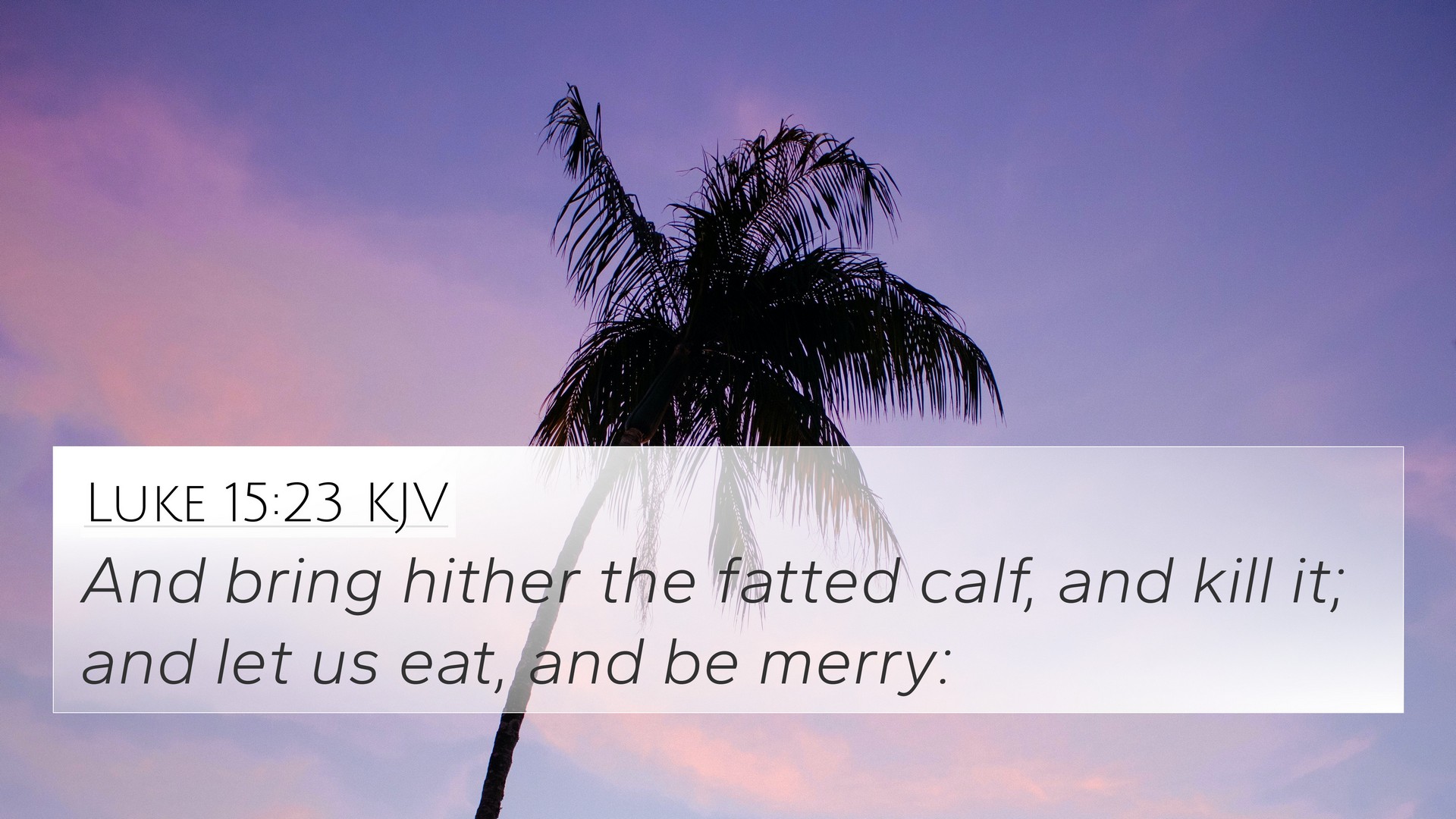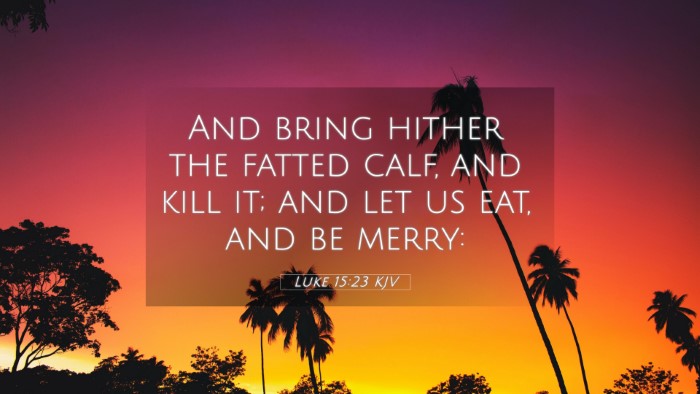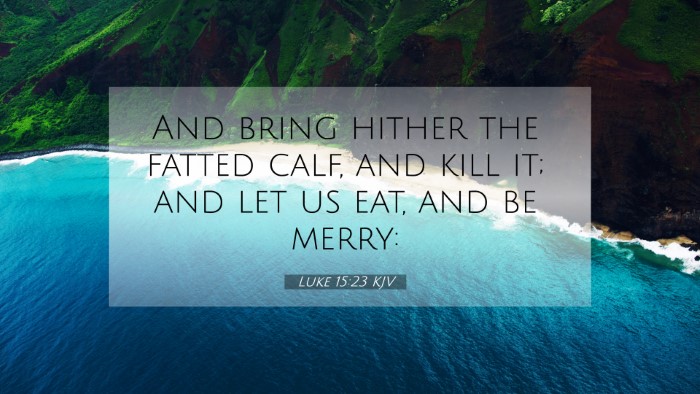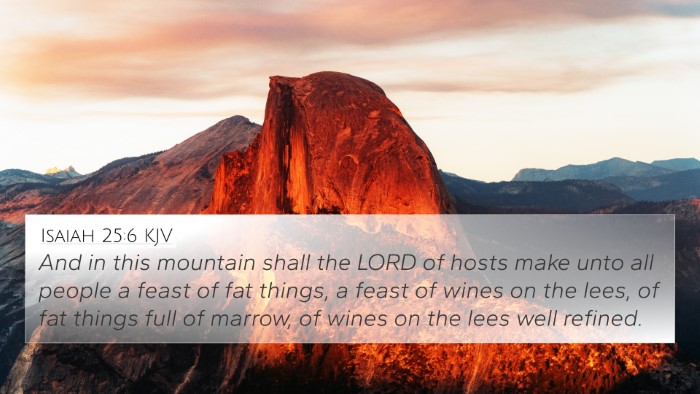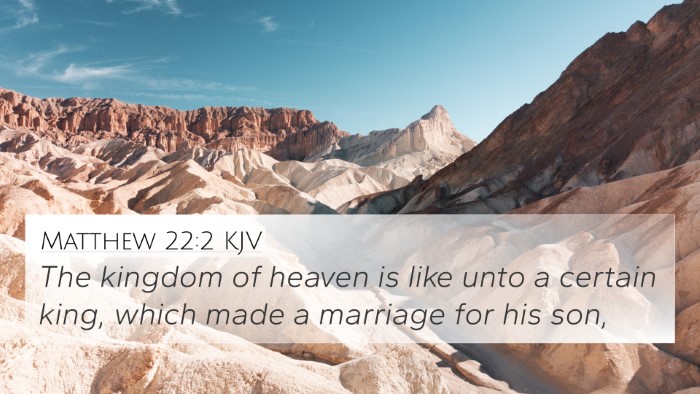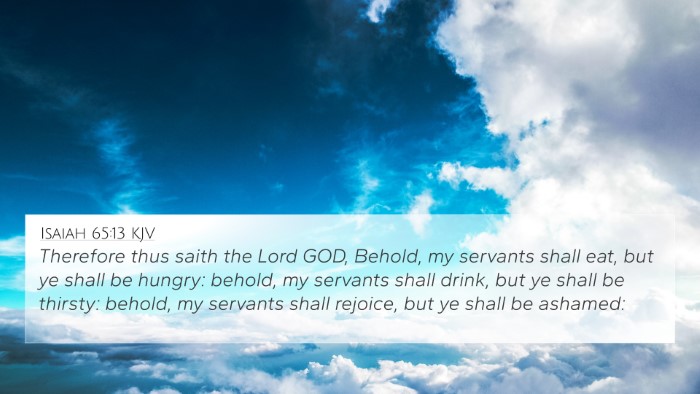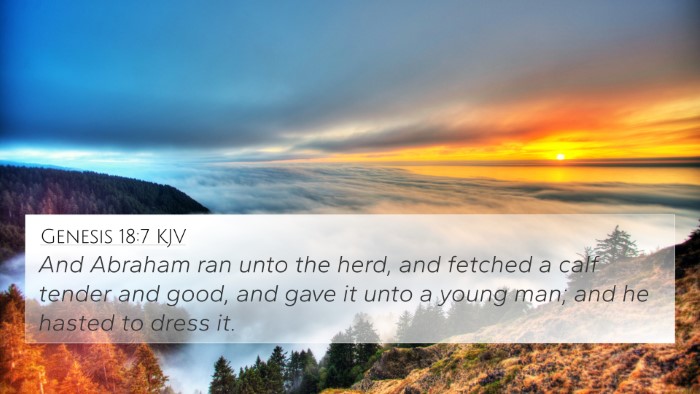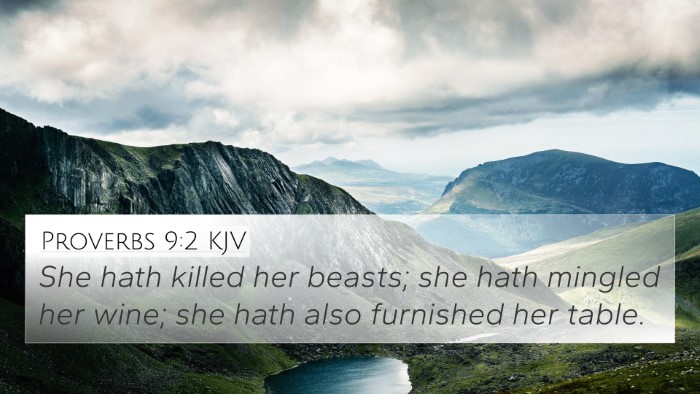Understanding Luke 15:23
In Luke 15:23, we find a significant moment in the parable of the Prodigal Son. The verse states:
"And bring the fattened calf and kill it, and let us eat and celebrate."
Context of the Verse
This verse occurs in a narrative where the father expresses joy over the return of his lost son. The parable illustrates themes of redemption, forgiveness, and the joy of reconciliation.
Commentaries Insights
-
Matthew Henry:
Henry emphasizes the father’s eagerness to celebrate his son’s return, showcasing divine compassion and the importance of rejoicing when one who is lost is found. The act of killing the fattened calf symbolizes a great feast, pointing to the magnitude of God's grace and joy in welcoming sinners back into the fold.
-
Albert Barnes:
Barnes interprets this verse as highlighting the father's lavish generosity. The fattened calf is a symbol of abundance and indicates the joy and honor the father wishes to bestow upon his son, demonstrating God’s willingness to bestow grace and blessings upon repentant sinners.
-
Adam Clarke:
Clarke notes that in the cultural context, such a feast would be significant. He elaborates that the father's command to prepare a feast signals not only a celebration of the return but also a restoration of the son's status within the family. It symbolizes transformation, moving from shame to honor through reconciliation.
Thematic Connections
This verse connects deeply with various themes throughout the Bible, showcasing the joy of redemption and the heart of the Father for those who return to Him. The following verses echo this sentiment:
- Isaiah 55:7: "Let the wicked forsake his way, and the unrighteous man his thoughts; let him return to the Lord, that he may have compassion on him."
- Luke 15:10: "Just so, I tell you, there is joy before the angels of God over one sinner who repents."
- Matthew 9:13: "For I came not to call the righteous, but sinners."
- Romans 5:8: "But God shows his love for us in that while we were still sinners, Christ died for us."
- 1 John 1:9: "If we confess our sins, he is faithful and just to forgive us our sins and to cleanse us from all unrighteousness."
- John 10:10: "I came that they may have life and have it abundantly."
- 2 Corinthians 5:17: "Therefore, if anyone is in Christ, he is a new creation. The old has passed away; behold, the new has come."
Cross-referencing Biblical texts
Understanding Luke 15:23 reveals its integration within the broader scriptural context. It not only serves as a standalone teaching but reflects a recurring biblical theme of restoration and celebration over repentance. Here are important connections:
- Luke 15:24: "For this my son was dead, and is alive again; he was lost, and is found." This verse directly follows and emphasizes the rationale behind the celebration.
- Matthew 22:2: "The kingdom of heaven may be compared to a king who gave a wedding feast for his son." This analogy draws parallels to the joyous celebration motif.
- Revelation 19:9: "Blessed are those who are invited to the marriage supper of the Lamb!" showing the ultimate celebration for those reconciled to God.
Comparative Bible Verse Analysis
The act of killing the fattened calf in Luke 15:23 can also be examined in conjunction with the Old Testament sacrificial system, where animals were often sacrificed to commemorate significant events. This establishes a continuity of God’s relational dynamics with humanity through varied forms of celebration and sacrifice.
The Joy of Reconciliation
Luke 15:23 encapsulates the heart of reconciliation within the Christian faith. Its application reaches beyond the immediate narrative into the life of believers today who are called to celebrate returns, restorations, and renewed relationships both with God and with one another.
Conclusion
The depth of Luke 15:23 extends through its joyful imagery, highlighting God’s welcoming nature. The accompanying commentaries enrich our understanding and provide a framework for exploring related verses and themes within Scripture, inviting us to engage in a cross-referencing Bible study that reveals the beauty of God’s grace and the joy of redemption.
